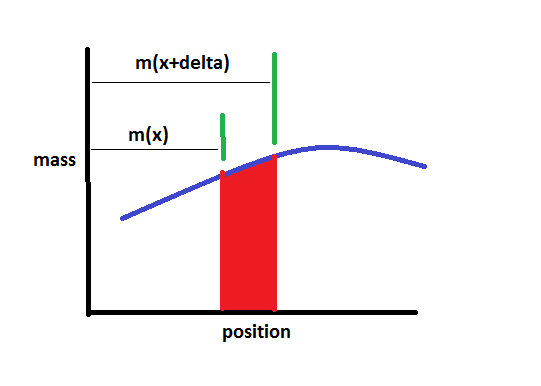I'm starting to read about radiometry and see I need to review some calculus stuff. I'm trying to understand density at a small length (keeping it 1D for simplicity).
I've seen density at a point defined by:
lim_{dL->0} deltaM/deltaL
So if I want to know the density at a point x, I might form a small segment about x:
deltaL = (x+h) - x = h
I understand conceptually that deltaM needs to be the average mass in this small segment to get the local density (then in the limit it becomes a point density). But what is the formula for deltaM? I feel like it should be something like:
deltaM = m(x+h) - m(x)
but what is m(x)? At first I started by assuming m(x) is a mass function (it gives me the mass at point x). But that doesn't make sense. The difference between two point masses doesn't give me the average mass in the segment.






